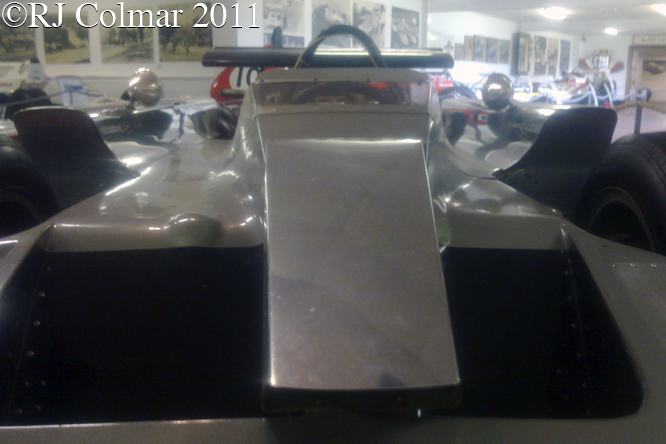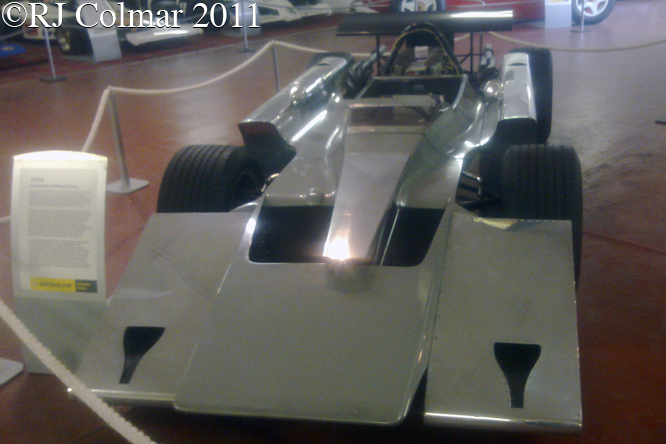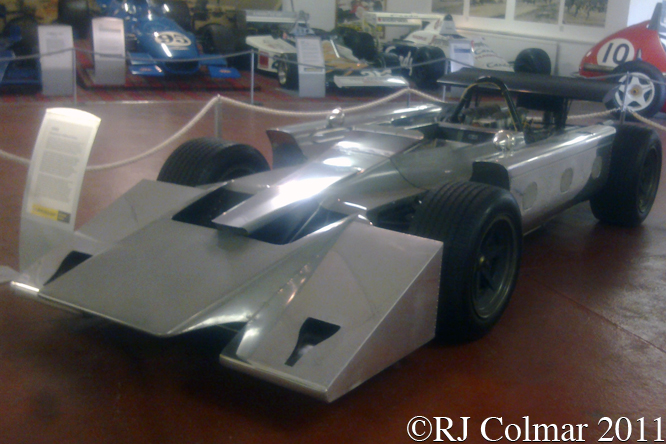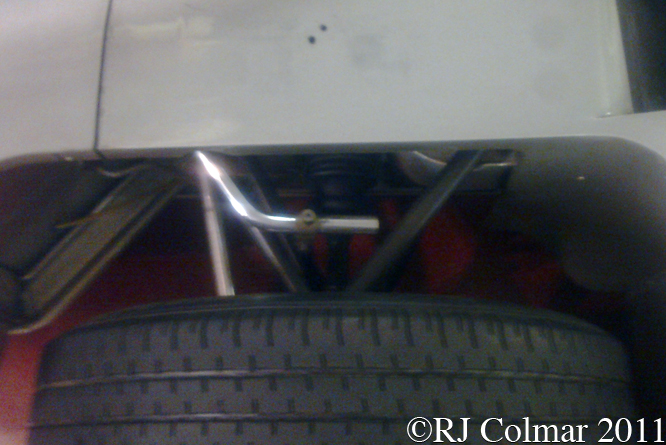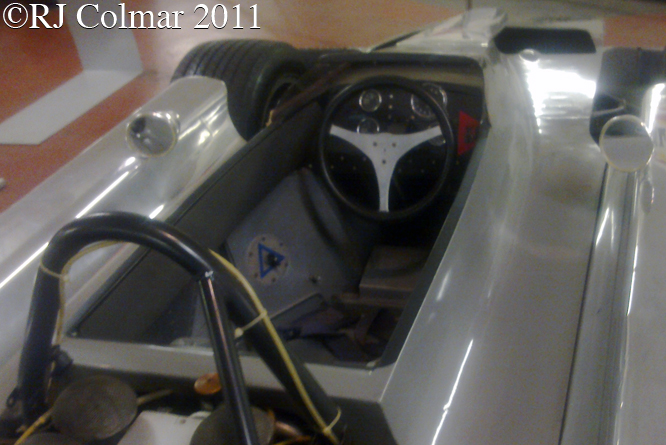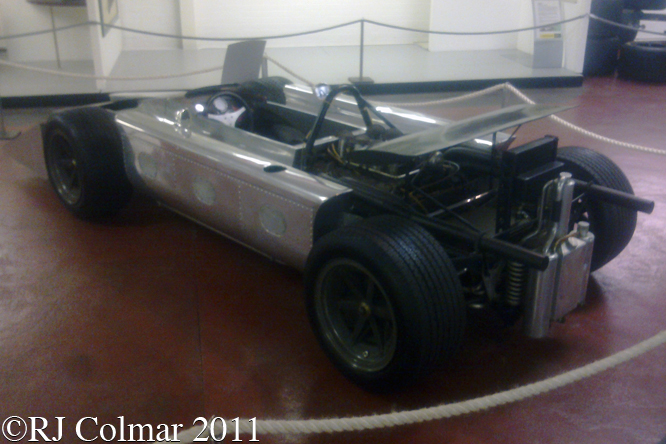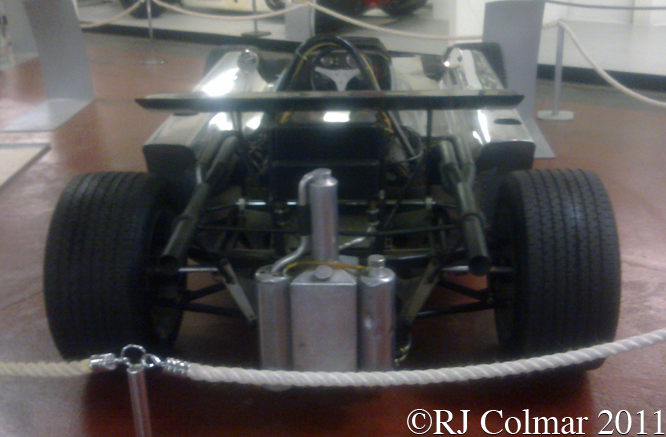Going into the 1982 season Williams had won not only a drivers Championship with Alan Jones in 1980, but two consecutive constructors Championships on which the team openly has always prided it’s self on more than any drivers championship.
At the end of 1981 Williams designer Patrick Head and aerodynamicist Frank Dernie revisited the idea of running a six wheel formula one car with four driven wheels as Robin Herd at March had done during the winter of 1976/77 with the March 2-4-0.
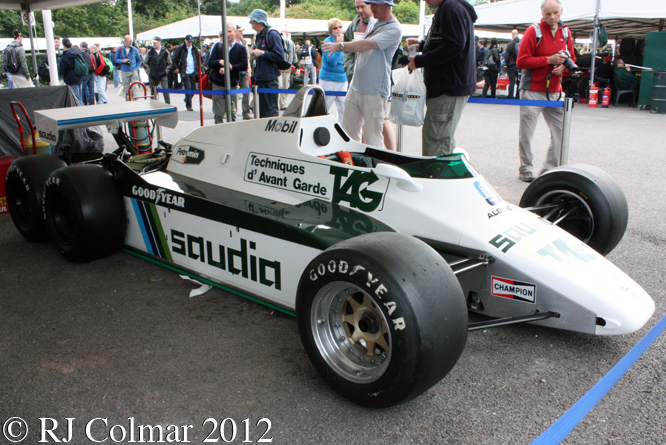
Unlike March the Williams team were not interested in the publicity from the concept but, already having sufficient financial backing to see the concept through, they were interested in the results and specifically a third consecutive constructors championship which the concept might be able to deliver.
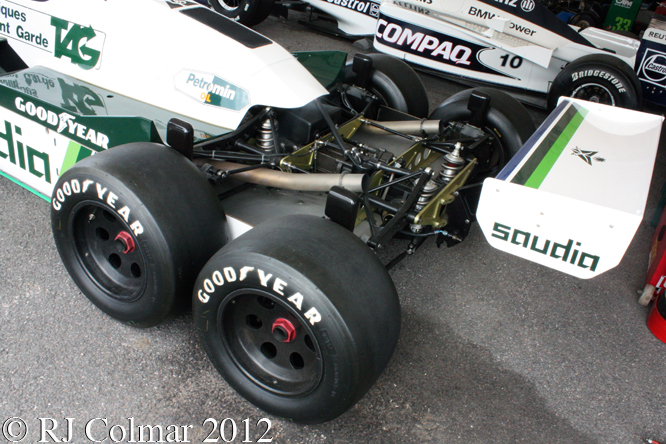
The rear 4 wheel drive transmission was tried out first on a 1981 FW07C chassis #FW07C/11 which became D spec with the additional driving wheels. Alan Jones tested the car before heading off into ‘temporary’ retirement in Australia.
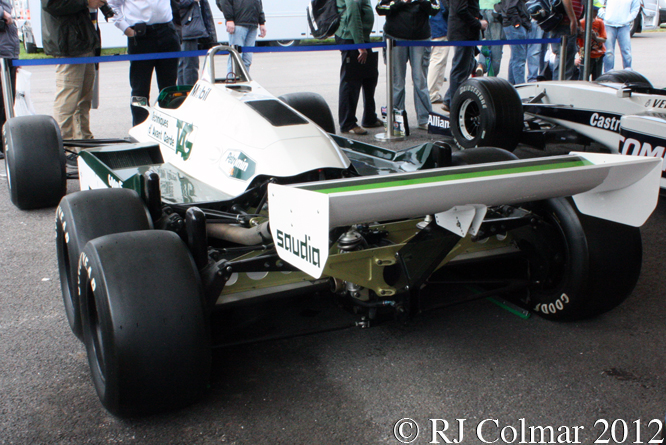
With Jones team mate Carlos Reutemann also considering retirement after blowing an opportunity to win the 1981 World Drivers Championship at the last race in 1981, Fittipaldi refugee, Keke Rosberg was taken on to test both the FW07D, the new two wheel drive FW08 and four wheel drive FW08B as seen in these photographs.
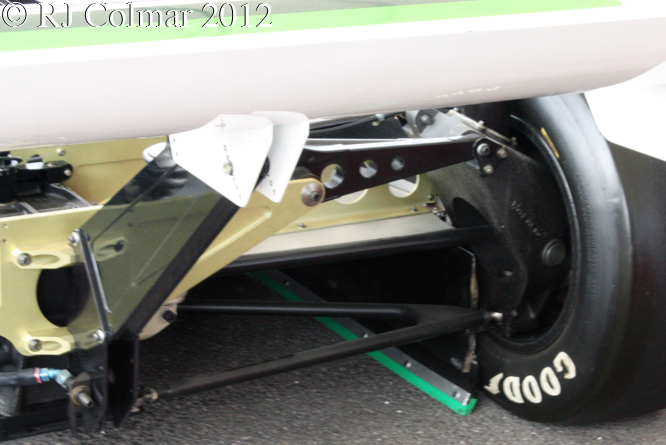
In January 1982 it was reported in Motor Sport that “Patrick Head is pressing on with his experimental six wheeled Williams….”, by February 1982 Motor Sport reported that “Williams will not be racing the six wheeler…” without any further reasons being given leading one to conclude the 4 wheel 2 wheel drive FW08 had proved sufficiently superior not to proceed with the FW08B.
Although Patrick Head has said that at a meeting of the Formula One teams others were horrified at the increased expense of the system and prospect of the chaos that would ensue during pitstops. The FIA eventually also put a restriction on the number of wheels for a Formula One car limited to just 4 of which 2 maybe driven.
Despite being reliant on the venerable, but reasonably reliable Cosworth DFV motor when all around them the turbo charged motors were showing ever more horsepower Keke Rosberg managed to win the 1982 drivers championship with the FW08, winning just one race in the sixteen race series but scoring enough points from his remaining placings to beat his turbocharged competitors.
The constructors championship was won by Ferrari and had not Gilles Villeneuve been killed and Didier Pironi injured during the season a Ferrari driver might well have won the 1982 championship.
Thanks for joining me on this “6 Wheel 4WD Final Call” edition of “Gettin’ a li’l psycho on tyres”, I hope you will join me again tomorrow. Don’t forget to come back now.


